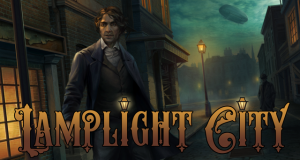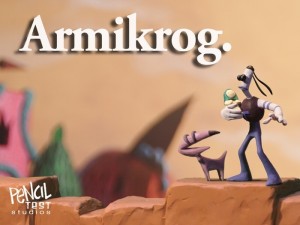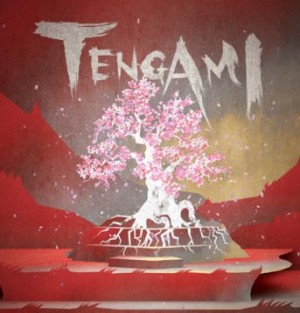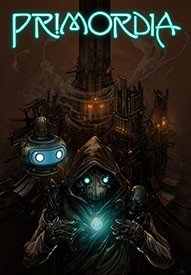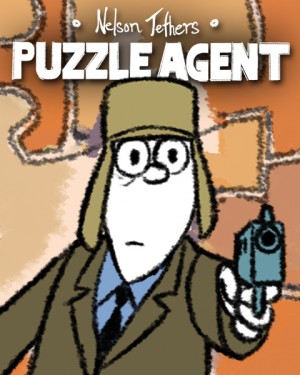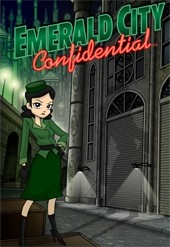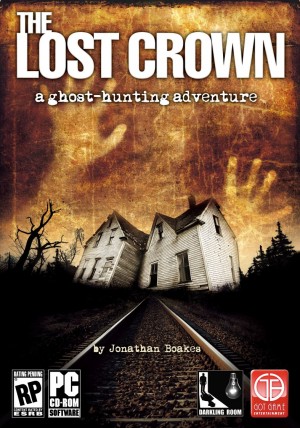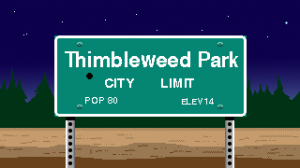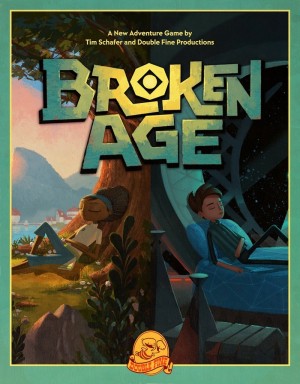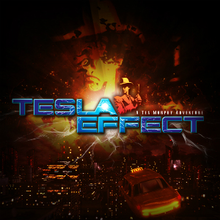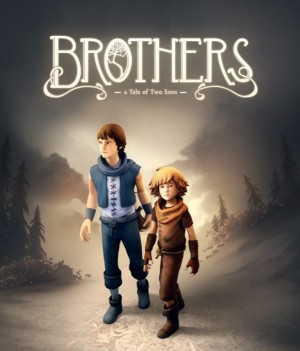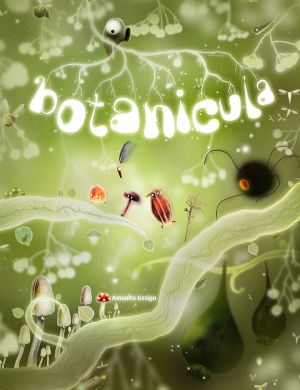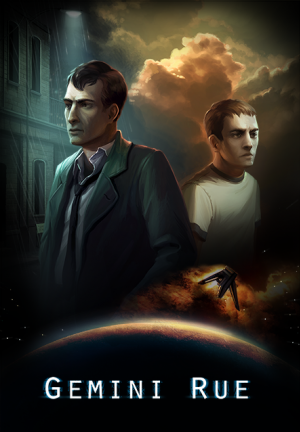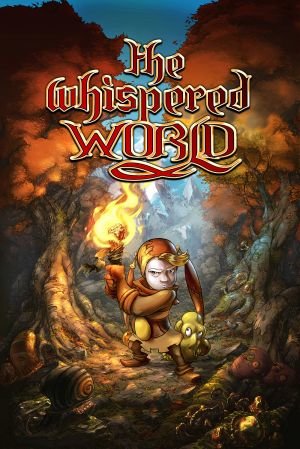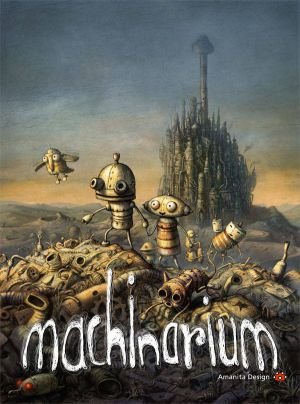Best SettingAggie Award Winners

Adventures can transport us to memorable places we’ve never been before, including those we never even imagined. Or perhaps to locales inspired by real-world locations, but never quite like this, making them feel fresh and new and awe-inspiring all over again. In these games, the setting is like an integral character of its own, inseparable from the story taking place within its borders.
» Aggie Awards - category overview
The Aggie award winners:
Eastshade (2019 winner)
Some game locales are great places to visit but you sure wouldn’t want to live there. Not so with Eastshade, a gorgeously fantastical world of craggy cliffs, mystical caverns, flower-strewn meadows, and rustic cottages that you’ll love spending time in just basking in all the natural beauty. Fittingly, you are here to paint the domed towers and picturesque landscapes, but you will also use your skills as a craftsman and problem-solver while aiding the appealingly anthropomorphic creatures. Wherever you go, take time and soak in the scenery. Admire the snow-covered mountains and glaciers as you carefully navigate icy seas, tromp through terraced gardens, discover an ancient species in hidden caves, catch a thief at a remote island inn, and unite a family across reedy beaches and quaint harbors. And when daylight fades, be sure to watch the stars come out from a stone-molded lookout as night steals softly across resplendent woodlands. For so completely immersing us in its jaw-dropping land of artistry and style, Eastshade takes home the Best Setting Aggie for 2019.
2019 winner of:
2019 Readers Choice' winner of:
- No awards won
Lamplight City (2018 winner)
The rich Victorian steampunk setting of Grundislav Games' Lamplight City feels very much alive and lived in, not merely a prop upon which to build a story. New Bretagne is just as much an integral character as any of the individuals you encounter throughout, and often the people themselves have been influenced by their station within it. It's not very often that you find a game where the environment appears to have shaped and molded the citizens with whom you're engaging. It certainly doesn’t hurt that it looks so darn good, from the opulent homes of the upper crust elite to the poorest of neighbourhood streets and many places in between, each rendered in lush pixel art.
Beneath the obvious visual appeal, however, lies an undercurrent of heavy subject matter, including politics, spirituality, discrimination and even outright bigotry. New Bretagne might look welcoming, but it's also a place where the colour of your skin can quickly land you behind bars. The impoverished don't fare much better, living their lives as second-class citizens while the rich and powerful reap the benefits the city has to offer. The working class, meanwhile, either find themselves out of a job due to the increase in steam technology or outright wounded because of it. All this comes together to create a fascinating backdrop, and for making us feel as though we're interacting with a living, breathing world and its inhabitants, Lamplight City wins the Aggie for Best Setting in 2018.
2018 winner of:
2018 Readers Choice' winner of:
XING: The Land Beyond (2017 winner)
Great game worlds come in all different forms, each perfectly suited to their designers’ unique vision. Past Aggie winners for Best Setting have ranged from extraterrestrial landscapes made of clay to paper scenes from a pop-up book to vector art environs in a modishly muted palette. White Lotus Interactive’s XING: The Land Beyond claims this year’s award by going in another direction, establishing its own distinct ambience through spectacular 3D hyper-naturalism based mainly on regions from good old planet Earth. Better yet, its jaw-dropping beauty comes with brains to match, as scattered throughout these monumental locales are expertly melded puzzles that channel players through the life stories and philosophies of four vastly different individuals.
Beginning the game dead, a surreal extra stop in the afterlife greets you with massive floating boulders, spores adrift in the air, and arching blue stars in the skies above. From there a portal leads to an exotic Pacific island, a lush jungle, a mountain ridged with pagodas, and a desert girdled by stone parapets. Each is linked to a historic culture, accompanied by ethnically diverse music and adorned with artworks and relics. Though these scenic backdrops are (mostly) realistic, you have the otherworldly ability to control the time of day and weather, causing delectable transformations at will. Moonlight is an eerie contrast to bright sunshine, rain and mist soften the gorgeous vistas, and snow sharpens branches and leaves into interlocking crystals. The final purpose of this panorama of graphical riches is brought into perspective by an unusual plot twist, as singular voyages of self-discovery unify nature, art, strife and mysticism into a startlingly new perspective. You can’t help but want to visit these places, and thanks to XING you don’t actually have to die to get there.
2017 winner of:
2017 Readers Choice' winner of:
Samorost 3 (2016 winner)
Ever since Samorost's little gnome first looked out at the stars in 2003, the celestial bodies he traverses have been quirky, charming and full of personality, as if the detritus from more conventional planets were cut loose and grew unique forms of life all their own. Constantly playing with our expected sense of scale, these worlds might consist of pieces of driftwood full of termites, hairy space whales, or masses of tentacle-like roots covered in amber grass. It's all beautifully, exuberantly alive, covered in knobbly growths and home to everything from beatboxing lizards to anteaters the size of houses. The few artificial structures are all made from junk, from the protagonist's original tin-can spaceship to his latest craft made from a seed pod and a cut-down plastic bottle.
In Samorost 3, this eccentricity is in full flower, the series' first full-length outing really showing off the breadth and range of Amanita Design's imagination. The art style has always been unique, photorealistic and yet endearingly handmade, richly textured and yet cartoonish. Now it's also presented in painstakingly animated HD. Where before it could feel beautiful but at times a bit aimless, now there are also elements of offbeat history and mythology involving monks, magical melodies and epic quests that help the universe feel more grounded, more like a real place and not just a psychedelic daydream. It's a fairy tale universe that would have blown the minds of the Brothers Grimm, full of playful wonder and brought to life with loving care, which is why it's so richly deserving of this year's Best Setting Aggie Award.
2016 winner of:
2016 Readers Choice' winner of:
Armikrog. (2015 winner)
In Armikrog, you crash land on a planet where a monster immediately tries to make you into a wrap sandwich. Fortunately, you manage to escape to a sanctuary beyond your wildest dreams… or possibly your freakiest nightmares. It’s a surreal, richly hued fortress where waxen petals deck the walls. Doors are pock-marked or blocked by fuzzy cubes. Creatures with long, gummy limbs hang from the ceilings. Machines with tube-like gewgaws squat below. Statues emit ghostly clues. Flaky red ants hibernate in their presidential cocoons. It’s whimsical, delectable, and seriously insane.
[The Aggie Awards - The Best Adventure Games of 2015 - Image #2] Of course, with this spiritual successor to The Neverhood, it’s not just the “what” and “where” that are important but the “how”, as each of these fantastical scenes have been meticulously hand-modeled in clay and brought to life with rich stop motion animation: players will putter about via bumper cars and buzzy-bee wings. You hop onto slurping tentacles, slithering up and down. Treadmill wheels rotate as you saunter around them. Giant air hoses suck you up and chuck you out. Clay snout birds and wheelie things flap and zoom about. For giving us a place so wonderfully bizarre that any self-respecting hero would want to crash there, Armikrog is entirely deserving of this year’s Best Setting Aggie Award.
2015 winner of:
2015 Readers Choice' winner of:
Tengami (2014 winner)
Nyamyam’s gorgeous side-scrolling adventure starts off deceptively simple: You open the pages of an unassuming book sitting on a table. It appears to be a simple pop-up book, but the illustrations within become so much more than mere drawings on a page. As you turn through the pages, the backgrounds change from lush, green forests to deep auburn hills to soft indigo woods with golden undertones. Guiding an unnamed Japanese protagonist, your journey through these backdrops becomes almost meditative as the colors, the soft Eastern music, the chirping birds, and the soft rush of water splashing combine to soothe and relax you.
But the ingenuity of Tengami’s design is that it transcends mood-setting and becomes an integral part of the gaming experience. Each lovely location is depicted through layered paper cutouts, and simple swipes of the screen not only cause pages to fold in on themselves and transition between vibrant colors and scenes, they also move parts of the landscape as you rearrange the papered terraces, bridges, and chasms around you to make your way through the world. The environments become puzzles themselves that you must unlock to progress. It is such a wondrous melding of setting and gameplay that you will often forget that you are, after all, simply turning and interacting with pages as you “read” through a picture book. Tengami uses the serene power of its setting to truly immerse you in a Zen-like experience, making it a deserving winner of our Best Setting Aggie Award for 2014.
2014 winner of:
2014 Readers Choice' winner of:
- No awards won
Kentucky Route Zero (2013 winner)
Ah, that mythical, faraway land known as Kentucky, full of surreal wonder and Lynchian mystery... Well, maybe not normally, but in the hands of developers Cardboard Computer, Kentucky Route Zero becomes a strange mash-up of comfortable down-home Americana, Twin Peaks, and the labyrinth from House of Leaves. Despite all the weirdness – tunnels that don't obey the laws of physics, forests full of giant animals, gas stations shaped like a giant horse's head – there's always a sense of world-weary realism. Things creak, rust, and sway in the wind. Cars pass quietly on a distant highway. Mosquitoes flit around in the headlights of your delivery truck. It looks, sounds, and feels like the American South.
With most games trying their hardest to recreate similar-but-different versions of Middle Earth, Coruscant, or New York, it is a refreshing change to see designers tackle something different, and we were duly impressed that a place that could so easily have been mundane was imbued with such a rich sense of history and intrigue. Through a masterful combination of folksy music, moody art, and evocative sound effects, this magical realist vision of Kentucky comes to life, a place where the familiar and the bizarre sit around a campfire and play guitar. For immersing us so deeply in a place so delightfully unusual, Kentucky Route Zero earns this year’s Best Setting Aggie over some serious competition.
2013 winner of:
2013 Readers Choice' winner of:
- No awards won
Primordia (2012 winner)
From the very first screenshot, it was clear that Primordia was going to be a truly distinctive game, and the final game didn't disappoint. The debut effort from indie developer Wormwood Studios turned out to be quite good overall, but by far the biggest standout was its locale. Set not in Earth's own future, but rather on an alternate world with a fabled history of machine replacing man, the game uses a limited colour palette restricted almost exclusively to shades of brown and gold, but this post-apocalyptic sci-fi adventure combines a familiar retro aesthetic with wide-ranging artistic influences to create some absolutely unforgettable scenery and characters. It's more than just a simple backdrop; its dreary desolation is an essential component of a tale that couldn't be told anywhere else, and for that Primordia narrowly earns our Best Setting award over stiff competition.
The once-proud city of Metropol and the radioactive desert wasteland around it are the very definition of beauty in decay. The struggle for survival of robots Horatio Nullbuilt (v5) and his floating sidekick Crispin in this harsh mechanical landscape is WALL-E by way of Alien and Dune, and it works exactly as well as that sounds. Ravaged by now-ancient nuclear war, the world that Primordia’s robots inhabit was once impressive in its grandeur but is now full of dilapidated buildings and dead robots half-buried in the sand. Even the vaunted “City of Light” is essentially a bunch of shanties stapled together into a raggedy analogue of Blade Runner’s endless cityscape. It’s a haunted world, one that oozes history far more detailed than the events laid out by the game’s exposition, and one that stuck with us long after we left it behind.
2012 winner of:
2012 Readers Choice' winner of:
- No awards won
L.A. Noire (2011 winner)
The main character of Rockstar’s L.A. Noire may be Detective Cole Phelps, but the real star of the game is 1940s Los Angeles, meticulously recreated to look authentic in every way and produce a vibrant, convincing game world. Unlike in most adventures, the City of Angels is a living, breathing city that’s teeming with period automobiles, cable cars, and pedestrians all going about their business independent of your actions. You could spend hours simply driving around seeking the many famous landmarks of the time, from Union Station to the RKO Theater to Chinatown. But the post-war era was also an important time for a city riddled with criminal elements and police corruption, creating an ideal atmosphere for the violence that pervades the gameplay.
Not only did Team Bondi convincingly rebuild the historical cityscape, they also reimagined the events of the time. Many of the cases were directly inspired by actual files from the LAPD, and several famous figures of the time are referenced for further real-life authenticity. Radio broadcasts and newspapers contribute to the larger picture of life in 1940s Los Angeles, as does fashion, with distinctive styles of various socio-economic classes on display. Even the little details that most games skimp on, such as product advertisements, shop window displays and interior furnishings, have all been carefully researched, so there’s never an aspect that feels overlooked. The immense budget behind this game may have created an uneven playing field, but the designers took full advantage of the opportunity, as L.A. Noire’s incredible scope and attention to detail is virtually unrivalled in the genre, making it a thoroughly deserving Aggie winner for Best Setting of 2011.
2011 winner of:
2011 Readers Choice' winner of:
Puzzle Agent (2010 winner)
Who would have expected a game set in Minnesota to be so memorable? Scoggins, the sleepy setting of Telltale’s Puzzle Agent, combines cartoonist Graham Annable’s simple art style with the equally simple sensibilities of a remote northern American town blanketed in snow… and secrets. Soon after FBI special agent Nelson Tethers arrives by snowmobile, it becomes clear that something is “off” in Scoggins. Local establishments such as Valda’s Hotel and the Moose Ear Diner appear to be warm and hospitable, but when Agent Tethers tries to get down to business, the tight-lipped citizens give him the cold shoulder. No one wants to talk about the accident at the imposing eraser factory on the outskirts of town. That’s partly because the townsfolk are too obsessed with solving puzzles to give him their full attention. In another game this preoccupation may seem tacked on, but in a town as remote and eccentric as Scoggins, we’re willing to believe it.
Though its cozy locales and Nordic-accented inhabitants sprinkle the town with character, Scoggins’ stark outdoor locations are the ones we remember most. Vast landscapes with no footprints in the snow – yet someone has been here. An icy forest that yields a grisly surprise. Bright eyeballs shining from the shadows. (You see them, don’t you?) Those shivers running down your spine aren’t due to the weather. No, there’s a mystery adrift in Scoggins, and it infuses this seemingly idyllic winter wonderland with an ice-cold edge. Who knew little guys in red pointed hats could be quite so terrifying? Puzzle Agent combines cute and creepy in a wintry rural landscape unlike any other, and for that reason it made the Aggie cut for this year’s Best Setting.
2010 winner of:
2010 Readers Choice' winner of:
- No awards won
At first it might seem like basing a game world around one of the most popular series of fantasy books of all time would be a no-brainer, but trying to put a unique twist on a beloved franchise is a path fraught with potential dangers. How do you make it fresh and new while staying faithful to the source material and not offending the hardcore fans? Emerald City Confidential is the answer. Designer Dave Gilbert managed to forge a noir version of the Land of Oz that is both instantly familiar and completely different. In this Emerald City, the buildings still glow a beautiful green, yet they never manage to illuminate the dark alleys.
Like any noir mystery worthy of the name, the game begins at a mysterious warehouse, and from there it travels to all the expected locations: the dockside, a seedy bar, an all-night diner, and a sinister millionaire’s hilltop mansion. The difference is, each one is infused with a particular Oz-style and charm that makes them memorable, filled with distinctive characters like Cowardly Lion the shady lawyer, Besty Bobbins the local tramp, and Petra the world-weary private eye. The number of little details (not to mention Easter Eggs) taken from the original novels is sometimes staggering, and create a sense that the environs you’re visiting existed before you arrived and will continue to after the credits roll. The hallmark of a great setting is that players want to return to it again and again, and we’re certain the world of Emerald City Confidential contains dozens more mysteries, secrets, and cover-ups just waiting for us to investigate.
2009 winner of:
2009 Readers Choice' winner of:
- No awards won
Designing the setting for a horror story is a challenging task. It has to be not only eerie and daunting, but also coherent and realistic. It must be ordinary enough for the player to feel at home and yet subtly harrowing and open to the influence of the inexplicable. As Stephen King once said, “The good horror tale will dance its way to the center of your life and find the secret door to the room you believed no one but you knew of.” Jonathan Boakes’ The Lost Crown succeeds in powerfully opening that secret door and releasing the horrors behind.
This stylish adventure is frighteningly atmospheric, mainly thanks to one of the most intriguing sets ever seen on PC monitors. A seemingly peaceful village in Eastern England appears at first to be a rural paradise, but a closer look reveals the dark secrets hidden by the white walls of its houses. Pestilent marshes, abandoned and dusty mansions, underground crypts and ghastly cemeteries are just a few examples of the uneasy locales Nigel Danvers has to explore to unearth the mystery of the Lost Crown of Anglia. Adding to this haunting ambience, each and every one of these locations is depicted in black and white, with just a few brushes of color to make them even more frightening. There’s a real sense of danger while walking around in Saxton; the perception of something wicked happening in the village. Without ever resorting to gore or cheap scare tactics, the setting is so disturbing that sometimes you will feel the urge to turn on the light, which is surely the greatest possible achievement for any horror story.
2008 winner of:
2008 Readers Choice' winner of:
Readers Choice' Award winners:
Gibbous: A Cthulhu Adventure (2019 winner)
It’s not every day you get to visit Transylvania, but it’s one of several destinations that provide a perfectly fitting backdrop to the unsettling goings-on in Gibbous: A Cthulhu Adventure. From a rundown dock with its rusty boat and threatening purple clouds, to the repugnant plaza of the fish-people, to a looming castle perched high atop its mountain peak, these are places even the sun doesn’t seem to want to shine. But where better to take the fabled Necronomicon to reverse an ancient curse, with weird cults and monsters breathing down your neck? There were plenty of great settings to choose from, but the striking environments of Stuck In Attic’s comic cosmic horror stood slightly above the rest to claim another reader award.
Lamplight City (2018 winner)
You probably wouldn’t want to live there (unless you’re one of the exceedingly wealthy and made of pixels), but there are nods all around that New Bretagne is a great place to visit. Set in an alternate Earth history in the 1800s, Lamplight City offers a rich variety of places to visit, all of them gorgeously designed. The real beauty of this setting is more than skin deep, however, as the amount of worldbuilding on display is thoroughly immersive, exploring numerous socioeconomic issues from different perspectives. This city feels real, like it existed before we got there and will continue after we’re gone. It’s so impressive, Grundislav Games sweeps the staff and reader Aggies this year.
Thimbleweed Park (2017 winner)
Thimbleweed Park
There’s a good reason why Thimbleweed Park is named after its setting; many good reasons, in fact. Though on the surface it may not seem like anything special – fading town set along a dusty stretch of highway, its business district now largely shuttered, its circus and once-flourishing pillow factory closed down – there’s a very distinct sense of place here, where everything seems to be just a little… off. The local populace is deliciously bizarre, and everyone seems to be hiding a secret or six. The many areas to explore, from cemeteries to sewers, convenience stores to creepy woods, are all gorgeously presented in pixel-perfect detail (not a requirement for an immersive setting… but it sure doesn’t hurt!), and each location has its own set of puzzles and mysteries to uncover. Perhaps the highest compliment one can pay a game’s setting is this: It simply couldn’t take place anywhere else. Well, that and awarding it an Aggie, as you’ve done here.
Obduction (2016 winner)
Cyan hasn’t lost it. More than 20 years ago, we were blown away by Myst Island and the bizarre worlds it was connected to through linking books. And now it’s happened all over again, this time with the gorgeously detailed 3D world of Obduction. Or rather worlds, as this surreal place is actually a misplaced mishmash of various planet fragments thrust together in layers. American frontier-like human dwellings in the now-deserted town of Hunrath hint at the war that preceded you, as do disturbing remnants of alien bodies. Elsewhere you’ll encounter massive machines with heavy metal chains, contrasting the magnificent purple rock formations and untamed foliage in the natural outdoor landscapes. Like its seminal predecessor, there is so much more to this game than its puzzles, and perhaps the best may just be its Aggie Award-winning setting.
Broken Age (2015 winner)
There’s a distinct sci-fi theme running through the highly competitive Best Setting category this year, but the one claiming the reader prize takes players on a delightful journey through diverse environments filled with richly imaginative details, from the pastoral baking town of Sugar Bunting where maiden sacrifices dress up like frosted cupcakes, to the floating cloud city of Meriloft, to a spaceship housing a roller coaster through ice cream mountains. And then all hell breaks loose. Well done, Double Fine.
Tesla Effect: A Tex Murphy Adventure (2014 winner)
Tesla Effect: A Tex Murphy Adventure
Ahh, Chandler Avenue… It felt like coming home to see familiar places like Coit Tower, the Golden Gate Hotel, Louie’s Brew & Stew, and Rook’s Pawn Shop. Home was not quite like we (or Tex) remembered it, however. Chelsee’s newsstand had long since been abandoned, and seven troubling years had passed. But even though time had taken its toll on the neighbourhood, it was still great fun to revisit Tesla Effect’s mash-up world of futuristic technology and old-school sensibilities, populated by mutants and humans (norms) alike. For so thoroughly immersing us in 2050 New San Francisco, the newest Tex Murphy adventure bags another reader award for Best Setting.
Brothers: A Tale of Two Sons (2013 winner)
Brothers: A Tale of Two Sons
You wouldn’t want to live there, but the world of Brothers: A Tale of Two Sons is a great place to visit. As you set out from your rural seaside village, you’ll soak in awe-inspiring sights like blood-stained battlefields of giant warriors, snow-covered landscapes, forests lined with hanging bodies, and an abandoned giant castle, to name just a few of the reasons this game copped the readers’ choice for Best Setting.
Botanicula (2012 winner)
In another tight race, it seems you were also tempted to choose the harsh post-apocalyptic environs of Primordia. But instead of the dreary browns of radiocative desert dunes, you went with the insanely cheery, surreal tree world of Amanita's Botanicula for top setting. A few giddy hours spent exploring with Feather, Poppyhead, Lantern, Twig, and Mrs. Mushroom proved a delightfully imaginative experience that made even fighting off invading parasites a joy to experience.
Gemini Rue (2011 winner)
You sure wouldn’t want to live amidst the homeless drug addicts on the drizzly streets of a purple-skied Barracus, or be a prisoner in the sterile, oppressive Center 7 mind rehabilitation facility, but they sure were fun places to visit. For many of you, at least, as the dual environments in this gritty neo-noir thriller combined to earn the title of best setting in a very close race among all finalists.
The Whispered World (2010 winner)
The world of Silentia is about to be destroyed unless young Sadwick can stop it, though he himself is fated to cause its ruin. And what a loss our readers have decided that would be, clearly impressed by The Whispered World’s rich fantasy setting filled with rural caravans, lush forests, cliffside towns, and towers in the clouds. Of course, it doesn’t hurt that it’s all beautifully designed in stunning hand-drawn 2D artwork.
Machinarium (2009 winner)
You wouldn’t want to live there, but plenty of readers sure enjoyed visiting the rusted metallic landscapes of Machinarium. And for great reason, as the game provides a truly memorable trip from the outlying trash heaps to the very nerve center of a robot metropolis, stopping just long enough to drop quarters at the video arcade, tend plants in the dilapidated terrarium, and dance a jig at the street corner jazz show along the way.
What is it about frightening ourselves that we find so irresistible? Are we masochists? Well, we do love adventures, so maybe that's true. In any case, it seems we aren't alone in favouring the haunting environs of Cornwall in The Lost Crown, though the equally haunted locations of A Vampyre Story and Mystery Case Files: Return to Ravenhearst made a strong case for themselves.







